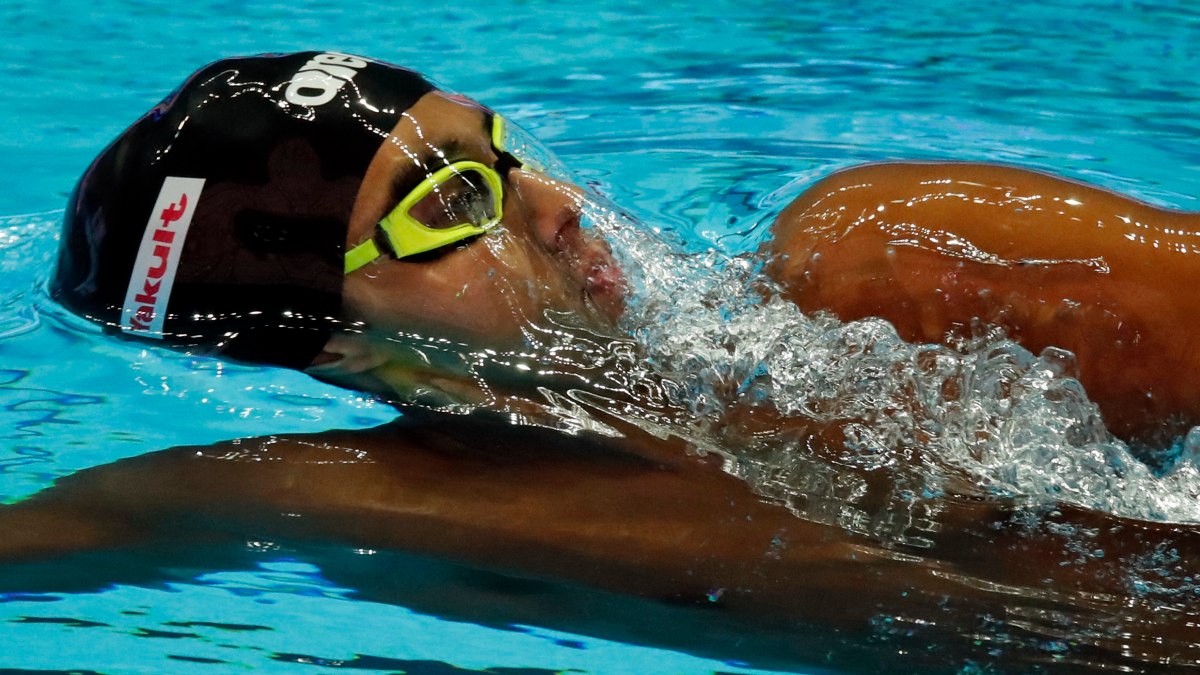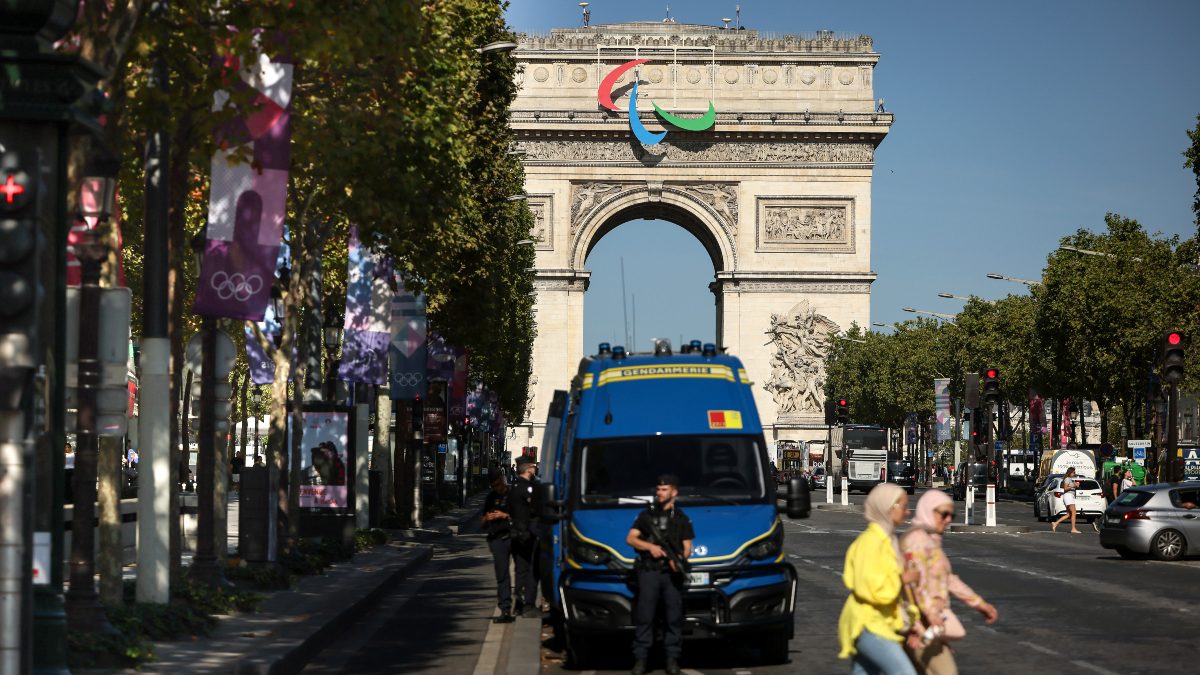India will be represented by two swimmers at the Paris Olympics that get underway on 26 July, with one of them set for a second appearance at the world’s biggest multi-sport event. read more
)
Srihari Nataraj will be making his second appearance at the Olympic Games in Paris. Reuters
Swimming has a special place in the Summer Olympics, as it is among a handful of sports including athletics to have been part of every edition since the inaugural modern Olympic Games in 1896. Swimming has the most medal events at the Olympics after athletics, and has also witnessed some of the most extraordinary feats in sporting history, including Michael Phelps winning a record eight gold medals in the 2008 Olympics in Beijing.
Indians have dominated events such as field hockey and have also collected a handful of medals in other sports such as wrestling, shooting, badminton, etc. Swimming, however, isn’t one of the sports where Indians have made a mark over the years, even if they debuted in the sport all the way back in the 1928 Games in Amsterdam.
Paris Olympics Complete Coverage: Click here for news, schedule, explainers and more
Indian swimmers, for one, had not featured in the Olympics for a period of three decades, failing to qualify between Melbourne 1956 and Seoul 1988 after making three consecutive appearances post-independence. They’ve also never gone past the heats in any of their 13 appearances at the Olympic Games, whether they’ve been represented by just one athlete — as was the case in 1928, 1932, 2004 and 2012 — or fielded as many as seven swimmers, as was the case in 1948.
Things certainly looked bright ahead of the Tokyo Olympics three years ago when both Sajan Prakash and Srihari Nataraj had qualified for the Games by breaching the ‘A’ Standard time set by World Aquatics, an achievement as rare as it can get for Indian swimmers. Maana Patel was the other Indian to qualify to the Tokyo Games, though she did so through ‘Universality Quota’. None of the three Indians, however, were able to secure a top-16 finish in their respective events, with Prakash’s 24th-place finish in men’s 200m butterfly turning out to be the best performance.
Who are the Indian swimmers going to Paris?
India have largely sent two to three swimmers on an average in the Olympics over the years, and it’s no different in the Paris Games with Srihari Nataraj and Dhinidhi Desinghu representing India in the sport.
Unlike the Tokyo Games, in which both Nataraj and Prakash had secured direct entry by breaching the ‘A’ qualifying time, both Indians have qualified for the Games through Universality quota.
National Olympic Committees (NOC) are allotted a maximum of 26 quotas each in men’s and women’s events. That includes a maximum of two quotas per NOC in an individual event and just one quota in a relay event.
World Aquatics, the global governing body for the sport formerly known as FINA, releases two qualifying times for the Olympics — the Olympic Qualifying Time (OQT) and Olympic Consideration Time (OCT), a.k.a. the ‘A’ and ‘B’ qualifying times.
In case an NOC does not have a single athlete or a team representing them in the Olympics, they are allowed to submit a maximum of two names – one each in the men’s and women’s categories — in order for them to qualifying through the ‘Universality’ Quota. It is mandatory for the athletes applying for ‘Universality’ quota to have participated in the preceding World Championships.
‘Universality’ quota could include athletes who have breached the OCT, a.k.a. the ‘B’ qualifying time but find themselves not included in the final list for the Olympics. Additionally, NOCs can also apply for a ‘Universality’ quota in one gender if they have an athlete qualified by attaining one of the two standard times in the other.
The Indian Olympic Association (IOA) had applied for ‘Universality’ quota in the women’s 100m backstroke event, in which they were represented by Patel, after Prakash and Nataraj had breached the qualifying time in men’s 200m butterfly and 100m backstroke events respectively.
Is a medal possible?
Desinghu has already been hogging the limelight event before arriving in Paris, with the 14-year-old swimming prodigy becoming the second-youngest athlete to represent India in the history of the Olympic Games.
The Bengaluru native, who will be competing in the women’s 200m freestyle event, had dominated last year’s National Games in Goa and had also smashed the National Record in her event at the National Championships in Hyderabad in the same year. She also got a taste of what it’s like to compete on the big stage, having participated in the Hangzhou Asian Games as well as in the World Championships earlier this year.
However, competing at the Olympics is a different ball-game altogether, and Desinghu might not necessarily be eyeing a place on the podium in her maiden appearance itself, though one can never say never. Even qualifying for the semi-finals will in itself be a historic feat for Desinghu, given it will be a first for an Indian swimmer at the Olympics.
Nataraj, who had finished 27th in the men’s 100m backstroke heats in Tokyo after achieving direct qualification, has his eyes set on equalling his personal best time, which he believes should land him a place in the semi-finals.
“I just have a goal towards trying to get a personal best. And I think if I make a personal best, it puts me in a good spot to be in the semifinals,” Nataraj had told PTI ahead of the Paris Games.
Swimming schedule at Paris Olympics: The swimming competition will take place between 27 July and 4 August in a temporary pool at the Paris La Défense Stadium, with medal events taking place every night.

 1 month ago
13
1 month ago
13
)
)
)
)
)
)
)
)
)
)
)
)
)
)
)
)
)
)
)
)
)
)
)
)
)
 English (US) ·
English (US) ·